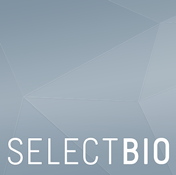2024年6月24日 星期一07:30 | Conference Registration, Materials Pick-Up, Coffee and Networking in the Exhibit Hall | |
Session Title: Conference Opening Plenary Session |
| | |
Session Venue: Coolsingel Room |
| | 08:30 |  | Conference Chair Conference Co-Chairperson's Introduction and Welcome
Claudia Gartner, CEO, microfluidic ChipShop GmbH, Germany
|
| 08:45 |  | Conference Chair Conference Co-Chairperson's Introduction and Welcome
Nicole Pamme, Professor in Analytical Chemistry, Stockholm University, Sweden
|
| 09:00 |  | Plenary Presentation Real-Time Viscoelastic Deformability Cytometry
Andrew J deMello, Professor of Biochemical Engineering & Institute Chair, ETH Zurich, Switzerland
Differences in the mechanical properties of diseased cells and their benign counterparts means that mechanical phenotyping of cells can be used to report both cellular state and function. Accordingly, the ability to perform such measurements in a robust and high-throughput manner suggests potential utility in the detection and diagnosis of disease. Whilst different methods for cellular mechanophenotyping have been described, the ability to perform high-throughput single-cell deformability measurements on liquid or solid tissue biopsies remains an unmet challenge within clinical settings. To address this issue, we have developed viscoelastic deformability cytometry (vDC), a microfluidic method able to measure the mechanical properties of single cells at rates of up to 100,000 cells per second. Fluid viscoelasticity is used to both focus and deform cells without the need for sheath fluids. We have used vDC for cell phenotyping of both liquid and solid tumor biopsies, cytoskeletal drug analysis, and identifying malignant lymphocytes in peripheral blood samples. vDC offers new opportunities for high-throughput, label-free single cell analysis, with diverse applications in clinical diagnostics and personalized medicine. |
| 09:30 |  | Plenary Presentation Microfluidics in Liquid Biopsy and Integration in Functional Studies
Lorena Dieguez, Leader of the Medical Devices Research Group, INL- International Iberian Nanotechnology Laboratory, Portugal
Microfluidics has demonstrated numerous advantages for isolation and characterization of liquid biopsy biomarkers in oncology, with increased sensitivity and throughput, enabling their implementation in clinical routine. Microfluidics is also very relevant to build biomimetic and dynamic 3D models to better understand the process of metastasis. In this talk, we present our most recent work for the development of holistic liquid biopsy assays, by integrating microfluidic extraction of CTCs, cfDNA, and EVs; and application of viable CTCs in functional models for the study of metastasis. |
| 10:00 |  | Plenary Presentation Droplet-based Microfluidics for Biomarker Detection and Quantification
Valerie Taly, CNRS Research Director, Professor and Group leader Translational Research and Microfluidics, Universite Paris Cite, France
Droplet-based microfluidic has led to the development of highly powerful tools with great potential in High-Throughput Screening where individual assays are compartmentalized within aqueous droplets acting as independant microreactors. Thanks to the combination of a decrease of assay volume and an increase of throughput, this technology goes beyond the capacities of conventional screening systems. Added to the flexibility and versatility of platform designs, such progresses in the manipulation of sub-nanoliter droplets has allowed to dramatically increase experimental level of control and precision.
The presentation will aim at demonstrating through selected examples, the great potential of this technology for patient monitoring in infectious diseases and cancers. A specific focuss will be made on the application of droplet-based digital PCR for the detection of blood-based methylation biomarkers (liquid biopsy). The results of several prospective clinical studies will be presented highlighting great potential of this technology for the follow-up of both advanced and localized cancers. |
| 10:30 | Mid-Morning Coffee Break and Networking in the Exhibit Hall | 11:30 |  | Plenary Presentation 3D Printing of Porous Membrane Integrated Devices
Rosanne Guijt, Professor, Deakin University, Australia
The integration of chemical functionalities in microfluidic devices can be accomplished by the combination of different materials. 3D printing has readily been proposed as alternative for manufacturing of fluidic devices, in particular for small scale production. Resin-based printers are most suitable for printing small features, however, the combination of different materials remains a challenge. This presentation focuses on the development of resins for digital light projection 3D printing of porous materials, and their integration into fluidic devices by resin exchange and using greyscale masks. Applications of the devices include phase separation, chemotaxis, extraction of DNA and the detection of iron from soil. |
| 12:00 |  | Plenary Presentation Real-Time Point-of-Care Diagnostics Using Microfluidic Sensors and Biosensors
Martyn Boutelle, Professor of Biomedical Sensors Engineering, Imperial College London, United Kingdom
We are investigating technologies that take POC measurements from a moment in time that assists diagnosis to a continuous information stream that guides treatment dynamically. Biomarker molecule concentrations can give important information about the health of a person as they are dynamically challenged by acute illness or for example during clinical treatment. Such an approach would allow individualized treatments to be chosen and optimized. We have been developing a range of sensing and biosensing solutions for the invasive, minimally invasive, and non-invasive monitoring of people in healthcare situations. Microfluidics provide a valuable means of clinical sampling and robust quantification of measured signals.
I will describe the key challenges in the development of such integrated sensing devices and present our recent data obtained during models of cardiac arrest and from the neonatal intensive care unit. |
| 12:30 |  | Plenary Presentation Microfluidics, Lab-on-Chip and Environmental Sustainability: The Limits of the Single-Use
Maiwenn Kersaudy-Kerhoas, Professor of Microfluidic Engineering, Heriot-Watt University, United Kingdom
Many microfluidic point-of-care tests are now ubiquitous tools in rapid methods for human or veterinary diagnostics, or environmental monitoring. Using a microfluidic engineer perspective, and discussions with global health practitioners and anthropologists, I will share what I learned in recent years about the mishaps of point-of-need, single-use and disposable methods. Finally, I will use a recent project in which we produced lateral flow tests using recycled plastics (including derived from discarded chewing-gum!) as a case study for discussion on materials, engineering, supply chains, regulations, and considerations of human behaviour towards creating more sustainable point-of-care medical devices. |
| 13:00 | Networking Buffet Lunch in the Exhibit Hall - Network with Exhibitors and View Posters | |
Afternoon Session Title: Circulating Biomarkers and Extracellular Vesicles -- Conrad Room |
| | |
Afternoon Session Title: Organoids and Spheroids Europe 2024 -- Coolsingel Room |
| | 18:30 | Networking Reception in the Exhibit Hall. French Wine Tasting Sponsored by Kloe. | 20:00 | Close of Networking Reception and Day 1 Conference Programming. |
2024年6月25日 星期二08:00 | Morning Coffee and Networking in the Exhibit Hall | |
Session Title: Companies and Technologies in the Lab-on-a-Chip and Microfluidics Field |
| | |
Session Chairperson: Dr. Claudia Gartner |
| | |
Session Venue: Coolsingel Room |
| | 08:30 |  Precision Glass Processing with LIDE For Lab-on-a-Chip and Microfluidic Applications Precision Glass Processing with LIDE For Lab-on-a-Chip and Microfluidic Applications
Joao Rafael Lourenco dos Santos, Director, Technical Sales, LPKF Laser & Electronics SE
Glass, renowned for lab-on-a-chip and microfluidics applications due to
its unique properties such as chemical inertness and biocompatibility,
optical transparency, low autofluorescence, high rigidity and
dimensional stability. However, its widespread use has been hindered by
its glass processing techniques which are typically expensive and with
limited design freedom. These also generate defects limiting glass’s
application and reducing its reliability in applications and industries
with stringent quality and safety requirements. With LIDE, highly
precise micrometer-scale features with high aspect-ratios can be
fabricated, overcoming the drawbacks of traditional glass processing.
With our proprietary LIDE technology, we achieve the fabrication of
depth-limited structures such as wells and channels, seamlessly
integrated with through-glass structures for inlet/outlet ports,
electrical interconnects, or other features of diverse geometries and
dimensions. Simultaneously, LIDE defines the part outlines and
facilitates their singulation. Our focus on precision and
cost-effectiveness is underscored by the high throughput inherent to
LIDE. This capability not only ensures quality glass microprocessing but
also opens avenues for the broader integration of glass in applications
traditionally dominated by other materials. The result is not only
enhanced precision but also new possibilities, positioning glass as a
versatile and competitive choice across a spectrum of applications and
industries.
| 08:50 |  Elveflow, Microfluidics One-Stop-Shop: PDMS Microfabrication and Flow Control Elveflow, Microfluidics One-Stop-Shop: PDMS Microfabrication and Flow Control
Barbara Corelli, Technical Sales Engineer, Elvesys
Elveflow develops state-of-the-art microfluidics equipment so scientists can focus on the science while we take care of the instruments. We specialize in chip microfabrication in PDMS and high-performance automated flow control, with solid expertise in system design for countless applications. Our plug-and-play microfluidics packs provide easy access to microfluidics for non-specialists.
| 09:10 |  Microfluidics and Mask-Aligner: How to Make the Right Choice? Microfluidics and Mask-Aligner: How to Make the Right Choice?
Nicolas Brillouet, CTO, Kloe
Mask-aligners have been used for decades as key technological equipments to manufacture microchips, in particular in semiconductor industry. More recently, these equipment, historically based on the use of mercury lamps as the UV-source, have also been considered as relevant systems to enable the fabrication of chips in microfluidics (molds / PDMS casting, Lab On a Chip, Organ-on-a-Chip…) in particular thanks to the cost effective use of plastic/flexible photomasks (before considering the use of chrome photomasks to achieve higher resolution). However, the use of mercury lamps, that was already very energy consuming, is also now worldwide compromised in a very near future by considering the global ban of using mercury in fluorescent lighting (Minamata Convention on Mercury) that entered into force in 2017, and that has been ratified by 140 countries, while the last use exemptions remain presently in effect later by 2027. Without waiting for this recent decision dedicated to protect human health and the environment from the adverse effects of mercury, our company KLOE SAS introduced UV-KUB3 on the market since 2015 as the very first range of UV-LED based mask-aligners and this presentation highlights the major advantages of using this range of innovative lithography equipments as the new generation of mask-aligners.
| 09:30 |  Precision Microfluidic Plastic Consumables: From Design for Manufacturing to High Volume Production Precision Microfluidic Plastic Consumables: From Design for Manufacturing to High Volume Production
Harald Fuchs, Project/Sales Manager, z-microsystems
The development path of a microfluidic consumable out of the lab to towards a robust and scalable product has some milestones we want to highlight in the talk. Design for manufacturing along with selection of material has a huge impact on functionality of the cartridge. Besides that, it determines processes and equipment needed for the production, what has an influence on the cost structure for further stages. Z-MICROSYSTESMS® support you along this path to your successful microfluidic consumable.
| 09:50 |  ASIGA Advancing 3D Printed Microfluidics and Lab-on-a-Chip ASIGA Advancing 3D Printed Microfluidics and Lab-on-a-Chip
Stephan WeiB, Global Technology Manager, ASIGA
ASIGA is a leader in reliable and precise DLP 3D Printers. In this talk we will show you how to leverage our open material system and voxel-level control over all parameters in our 3D printers to create cutting edge biocompatible Microfluidic Chips.
| 10:10 |  Combining the Power of Plasmonics and Microfluidics: A Collaboration Between Causeway Sensors, IPHT and STRATEC Consumables Combining the Power of Plasmonics and Microfluidics: A Collaboration Between Causeway Sensors, IPHT and STRATEC Consumables
Iris Prinz, Head of Sales and Business Development, STRATEC Consumables GmbH
In the evolving application of plasmonic devices for biosensing, the partnership between Causeway Sensors, IPHT and STRATEC Consumables is driving innovation in integrated plasmonic and microfluidic devices. This talk delves into the collaborative relationship that enabled the joint manufacture of a cutting-edge product designed by Causeway, focusing on the specialized plasmonic device central to real-time measurement of bioreactor samples like the IgG Titre quantification in Bioprocessing. IPHT Jena realizing nanostructured templates as well as STRATEC Consumables - renowned for its expertise in smart polymer-based consumables, coating technologies, and automated assembly - has been critical in bringing Causeways’ vision to life. The presentation will cover the technical challenges, the solutions developed, and the impact of this collaboration on biopharmaceutical manufacturing, allowing greater insights into behaviours in the bioreactor. By exploring the journey of how STRATEC Consumables realizes these microfluidic devices for Causeway, attendees will gain insight into the critical role of OEM partnerships in pushing the boundaries of what is possible in life sciences, pharma and medical technologies.
| 10:30 | Mid-Morning Coffee Break and Networking in the Exhibit Hall | 11:00 |  | Keynote Presentation Precision Manufacturing of Polymeric Microfluidic Devices: Progress from Fast Prototyping Using High Precision DLP Printing and Defect-Free Production via Self-Lubricating Mould Technology
Nan Zhang, Associate Professor, University College Dublin, Ireland
Microfluidic devices have been used in point-of-care diagnostics, drug development and life science research. After more than 40 years development, microfluidic technology has been becoming a platform technology and reforming the development of the future generation in-vitro diagnostics, bio-pharma and life science. In comparison to the increasing development of advanced applications using microfluidic as a technical base, the manufacturing processes of microfluidic devices is still constrained by the tedious prototyping, which is still time consuming and requires specialized equipment. During production stage, for the high density and high aspect ratio micro structures, demoulding can cause feature damage or distortion, and thus affect the subsequent bonding and overall chip functionality. In the present talk, I would like to share our current progress on high precision prototyping of microfluidics devices by 3D printing based on Digital Light Processing technology, and showcase complex channel 3D printing and hybrid 3D features inside of 2.5D micro channel. Additionally, I would also like to talk about our newly developed novel self-lubricating micro/nano mold technology for defects-free production of plastic microfluidic devices. The demonstration will be highlighted for testing star patterns and microfluidic devices. |
| 11:30 |  | Keynote Presentation Advances in 3D Printing for Microfluidics
Gregory Nordin, Professor, Brigham Young University, United States of America
While there is great interest in 3D printing for microfluidic device fabrication, a main challenge has been to achieve feature sizes that are in the truly microfluidic regime (<100 µm). A key issue is that microfluidic devices are comprised primarily of negative space features, which therefore dominate 3D printing resolution requirements, as compared to positive space features that are typical for many other 3D printing applications. Consequently, we have developed our own stereolithographic 3D printers and materials that are specifically tailored to meet these needs. We have shown 3D printed channels as small as 18 µm x 20 µm, and have recently reduced this to 2 µm x 2 µm. We have also developed active elements such as valves and pumps with the smallest valves having an active area of only 15 µm x 15 µm. With these capabilities, we demonstrate highly integrated 3D printed microfluidic components such as a 10-stage 2-fold serial dilutor in an X-Y footprint of only 2.2 mm x 1.1 mm. We also show a fast (~1 ms) and small (<1 mm^3) 3D printed mixer using a new multi-resolution 3D printing technique. These advances open the door to 3D printing as a replacement for expensive cleanroom fabrication processes, with the additional advantage of fast (~5-15 minute), parallel fabrication of many devices in a single print run due to their small size. |
| 12:00 | Methylation-based ddPCR for the Follow-Up of Patients with Cancers
Valerie Taly, CNRS Research Director, Professor and Group leader Translational Research and Microfluidics, Universite Paris Cite, France
Technological advances have been key to the great development of liquid biopsies that we have witness these last years. In particular droplet-based digital PCR, by its accuracy and high sensitivity has greatly contributed to our ability to detect and quantify cancer circulating biomarkers such as circulating tumor DNA. In this presentation, we a specific focus will be made on the application of droplet-based digital PCR for the detection of blood-based methylation biomarkers (liquid biopsy). The results of several prospective clinical studies will be presented highlighting great potential of this technology for the follow-up of both advanced and localized cancers. | 12:30 | Networking Buffet Lunch -- Network with Exhibitors and View Posters | 15:30 | Best Poster Awards Sponsored by Lab-on-a-Chip Journal, Royal Society of Chemistry (RSC) -- In the Coolsingel Room |
* 活動內容有可能不事先告知作更動及調整。
|
